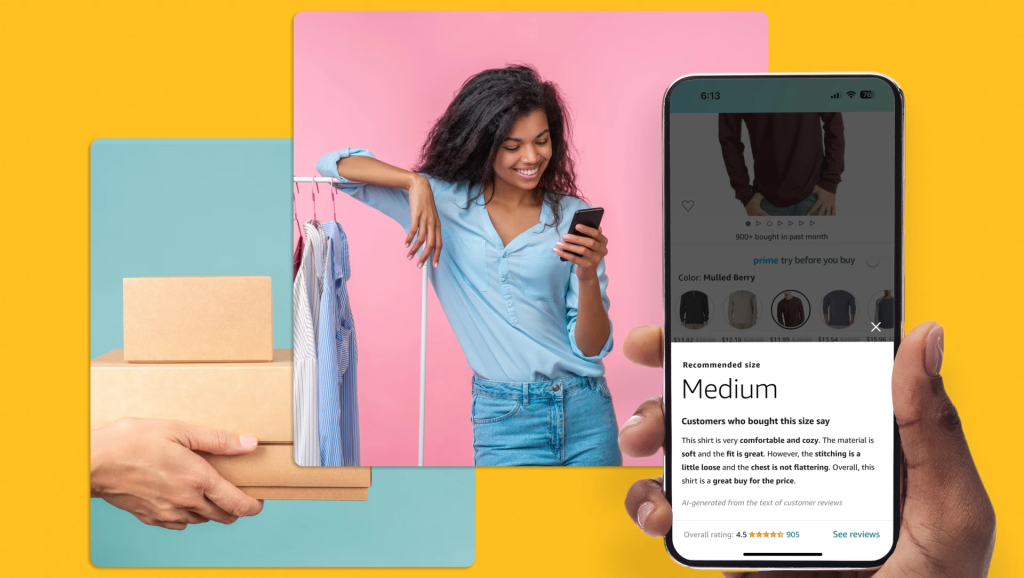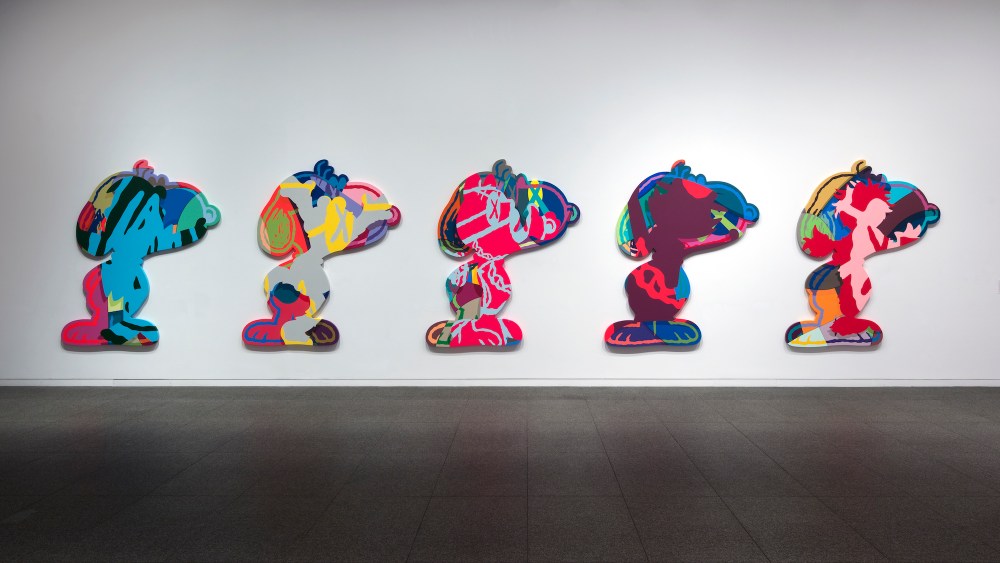The core challenge that dogs fashion e-commerce, fuels returns and balloons shipping costs comes down to a simple, but immutable reality: Shoppers can’t be sure if a garment truly fits until they try it on, and brands often don’t know why an item didn’t work for the customer. Apparel companies and tech platforms like Amazon have been trying to tackle this issue in various ways for years.
But now a new generation of artificial intelligence has prompted the e-tail giant to take another run at the problem, while arming brands with its weapon of choice: AI-driven insights on fit.
On Monday, Amazon Fashion unveiled updates that target the fit dilemma for customers, most of which involve new platform features to help inform purchase decisions. Shoppers will get personalized size recommendations, AI-generated Fit Review highlights and standardized size charts. But among that lineup, there’s one addition geared specifically toward brands.
Amazon developed a new Fit Insights Tool to shed light on returned products that have sizing issues.
Apoorv Chaudhri, director of computer vision and machine learning at Amazon Fashion, explained in a blog post that it used a large language model “to extract and aggregate customer feedback on fit, style and fabric. [The tool] contextualizes returns and size chart analyses with customer reviews, using machine learning to identify defects in size charts….Amazon can do the heavy lifting for brands and offer insights into the fit of various products.”
LLMs are complex, but fundamentally, the models are fed by enormous amounts of data to train AIs quickly and more comprehensively. Such models have powered recent breakthroughs like ChatGPT and paved the way for other forms of generative AI. Now it’s at the heart of Fit Insights, and according to Amazon, this means brands will have access to valuable data, so they can improve their products, how they describe the fit to customers or even adjust their own sizing nomenclature.
While that may or may not go on behind the scenes, out in front, fashion shoppers will surely notice the new public-facing AI fit features.
Personalized size recommendations employ a deep learning-based algorithm that evaluates “sizing relationships between brands and their size systems, a product’s reviews and other details, and a customer’s own fit preferences,” said Chaudhri, so it can recommend the best-fitting size for a given individual.
Privacy wasn’t explicitly mentioned, but it came up in the form of an explanation that the algorithm anonymously groups customers with similar size preferences, and products with similar fit. According to Chaudhri, it churns through millions of product details across style, size charts and customer reviews, and “billions of anonymized customer purchases.” It also knows which sizes were bought and kept by similar customers for the same or similar-fitting product, and because it continuously learns, it adapts as a shopper’s sizing needs change. For instance, children grow fast, and the AI accounts for that. Naturally, the preferences used for size recommendations give way to other product recommendations as well, to give customers some options.
The AI-generated fit review highlights summarize customer feedback tuned to the specific shopper and garment, so they’ll know if they need to size up or down based on reviews from people who bought the same size.
Finally, Amazon revamped its size charts to make them more useful. The company used AI to improve their accuracy, and made them easier to follow. “By leveraging LLMs, we automatically extract and clean product size chart data from multiple sources,” Chaudhri added. “We then transform the data into standardized sizes, remove duplicate information and auto-correct missing or incorrect measurements, resulting in a more accurate and consistent size chart.”
If it works, this could be the most popular feature of all for fashion shoppers weary of parsing variable sizing systems across styles and brands.



